|
Thursday, Dec. 20
11 a.m.
All Hands meeting - Ramsey Auditorium
1 p.m.
ALCPG ILC Physics and Detector R&D Seminar - WH-10NW, West Wing
Speaker: A. Para, Fermilab
Title: High Resolution Hadron Calorimetry; Is it the Season for Miracles?
THERE WILL BE NO THEORETICAL PHYSICS SEMINAR THIS WEEK
3:30 p.m.
DIRECTOR'S COFFEE BREAK - 2nd Flr X-Over
THERE WILL BE NO ACCELERATOR PHYSICS AND TECHNOLOGY SEMINAR TODAY
Friday, Dec. 21
3:30 p.m.
DIRECTOR'S COFFEE BREAK - 2nd Flr X-Over
4 p.m.
Joint Experimental-Theoretical Physics Seminar - One West
Speaker: J. Velkovska, Vanderbilt University
Title: Flow and Wake in the Quark-Gluon Liquid Produced at RHIC
Click here for NALCAL,
a weekly calendar with links to additional information.
|
Thursday, Dec. 20
- Tomato florentine
- *Grilled chicken cordon bleu sandwich
- Chimichangas
- Smart Cuisine: chicken marsala
- Smoked turkey melt
- Assorted slice pizza
- SW chicken salad w/roasted corn salsa
Wilson Hall Cafe menu |
|
Thursday, Dec. 20
Dinner
- Chestnut soup w/cognac cream
- Medallion of lobster w/champagne butter sauce
- Steamed spaghetti squash
- Sautéed pea pods & red pepper
- Spinach pomegranate salad
- Raspberry parfait w/assortment of Christmas cookies
Wednesday, Dec. 26
Lunch
- Closed
Chez Leon menu
Call x4598 to make your reservation. |
|
|
All Hands meeting at 11 a.m.
Fermilab Director Pier Oddone will discuss the implications of the proposed FY08 federal budget and what it means for the laboratory at an All Hands meeting at 11 a.m. today in Ramsey Auditorium. The FY08 omnibus budget bill, expected to become law this week, will have a significant impact on Fermilab. The meeting will be available via live video stream. After the meeting is over the archived video can be viewed at the same Web site.
|
The CMS Tracking Detector's midnight ride
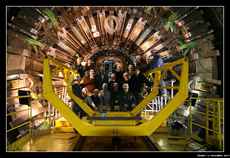
After inserting the CMS tracker, the team gathers around the detector. Image courtesy of J.F. Fuchs.
Scientists of the U.S. CMS collaboration today (Dec. 20) joined colleagues around the world in announcing the successful installation of the world's largest silicon tracking detector at CERN in Geneva, Switzerland. Just before midnight on Wednesday, Dec. 12, the six-ton CMS Silicon Strip Tracking Detector began a 10-mile, three-hour journey from the main CERN site to the CMS experimental facility. Later that day, workers carefully lowered it 90 meters into the underground collision hall for the CMS experiment at the Large Hadron Collider particle accelerator. Installation began on Saturday, Dec. 15, and concluded early Sunday morning.
Of the CMS collaboration's approximately 2,300 physicists, about 500 are U.S. scientists from more than 45 U.S. universities and Fermilab, supported by the Department of Energy and the National Science Foundation. The U.S. is the largest single national group in the experiment, and U.S. scientists have built and delivered several key elements of the CMS detector to CERN.
Physicist Dennis Kovar, acting associate director for High Energy Physics at DOE's Office of Science was on the scene in Geneva as the tracker descended into place. "It was remarkable to watch the team of scientists as the CMS detector comes to completion," Kovar said. "The tracker represents an extraordinary technological feat. I congratulate the CMS collaboration on their achievement and look forward to celebrating their next milestone."
Read the full press release
|
Federal budget impact on Fermilab and HEP
The FY08 federal budget, which is expected to pass later this week, eliminates $90 million in funding for High Energy Physics. As outlined in a recent Director's Corner, the diminished funds will have a powerful impact on Fermilab.
More information on the cuts and their impact will be discussed at the All Hands meeting at 11 a.m. today in Ramsey Auditorium. Below is a selection of recent In the News stories that reflect the impact that the budget could have on Fermilab.
In defense of science: Is anyone listening?
From Beacon News editorial,
Dec. 20, 2007
Read More
Budget Cuts Imperil Fermilab
From Science Magazine,
Dec. 19, 2007
Read More
Senate Passes Science-Slim Budget, Funding "Crisis" Feared
From Wired,
Dec. 19, 2007
Read More
Fermilab under threat due to federal budget
From Geneva Republican,
Dec. 19, 2007
Read More
US budget cuts a 'body blow' to particle accelerator
From New Scientist,
Dec. 19, 2007
Read More
See all related news stories here
|
Chuck Grozis to retire
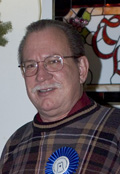 |
| Chuck Grozis |
After more than 38 years of service, Chuck Grozis will hang up his badge on Dec. 31. The senior engineering associate began working at Fermilab in 1969 as a Draftsman Senior in the Radio Frequency Section.
He still remembers the good old "Wilson Days."
"When I started in 1969 in the Village of Weston, there was nothing here yet," said Grozis.
In his early years, Grozis, whose badge is #519, was part of the Fermilab Volunteer Fire Department. He had six job title changes during his career and worked in seven different sections/departments. Grozis played a major role in many large projects, such as the CDF Solenoid, KTEV and E872 magnets. He was integral in the CCM conversion and thermal barrier coating installation as well as upgrades for CDF and the Jolly Green Giant, a 250-ton magnet that was retired in 2006 after a 40-year career. He was also involved in NOvA's plastic extrusions. He will finish his career as the group leader of the design and drafting group in the PPD/Mechanical Department.
"Essentially I've seen the laboratory built, and there aren't many people here today who can say that. It's been a mind-boggling experience," Grozis said.
In addition to "one rewarding career," Grozis said another life-changing Fermilab experience was meeting his wife, Terry, at the laboratory.
Coffee and cake will be served from 10 a.m. to noon in BEG on Thursday, Dec. 27, to honor Grozis for his 38 years of service.
-- Kurt Krempetz
|
|
|
Getting answers from the
W Boson
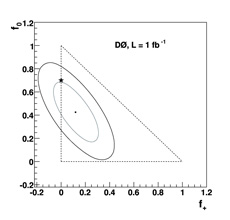
The W boson helicity fractions in top quark decays that are the best match to the data are shown by the dot in this figure. Helicity refers to the relationship between a particle's "spin" and momentum when it is in motion. The smaller and larger ellipses contain the values consistent with the data at 68 percent and 95 percent confidence levels, respectively. The star marks the Standard Model predictions, and the triangle bounds the physically-allowed values.
Since the discovery of the top quark, physicists have been scrutinizing every detail of this heavyweight particle. The attention comes with good reason, as the top quark guards many secrets of our universe, from hints about the Higgs boson to insight on electroweak interactions. However, the top quark decays almost immediately after it is produced, leaving little time to study it. Tevatron researchers generally reconstruct the top quark's last moments via its decay particles: a W boson and a bottom quark. Though this CSI-style technique yields much information on what happened, it doesn't tell the full story. Physicists at the DZero experiment are taking this detective work one step farther by getting answers directly from the W boson.
When top quarks decay, they must follow rules laid out by quantum mechanics. Those rules govern features of the decay products such as the energy, electric charge, and a quantum number known as "spin." The historical terminology of "spin" refers to an intrinsic property that has nothing to do with the particle's motion.
Continue reading the ROW
Learn more here and here.
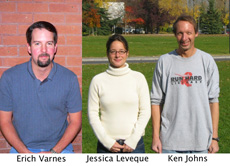
DZero collaborators from the University of Arizona designed this measurement of W boson helicity in top quark decays.
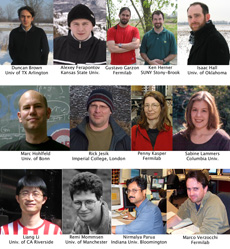
Members of the DZero Trigger Board work to ensure the data taken at DZero reflects a broad range of physics interests while selecting interesting events with the highest possible efficiencies. Their efforts are essential for analyses such as that shown here.
Result of the Week Archive
|
|
Have a safe day!
Payroll Department and Cashier's Office closings
The Payroll Department will close at 4:30 p.m. on Dec. 21 and reopen at 7:30 a.m. on Jan. 2. The Cashier's Office will close at 4 p.m. on Dec. 21 and reopen at 12:30 p.m. on Jan. 2.
Lederman Science Center closings
Lederman Science Center will be closed from Monday, Dec. 24, through Tuesday, Jan. 1. It will reopen on Wednesday, Jan. 2, at 8:30 a.m.
Project X physics workshop Jan. 25-26
Fermilab will host a second users' workshop Jan. 25-26 to discuss the physics of Project X. The workshop will focus on the details of the experiments that might be proposed to take advantage of a high-intensity proton source, their physics impact
and the development of the overall experimental strategy. Information about the
workshop, working groups and ongoing efforts is available online.
Fermi Kyuki-Do Class begins Jan. 7
Want to start the New Year out right with practical exercise? Kyuki-Do is a practical method of selfdefense that will teach you three important things: balance, power and grace. Classes are held for six weeks on Monday and Wednesday from 5 - 6 p.m. at the Recreation Facility in the Village. You need to register through the Recreation Office and also be a member of the Recreation Facility.
Additional Activities |
|